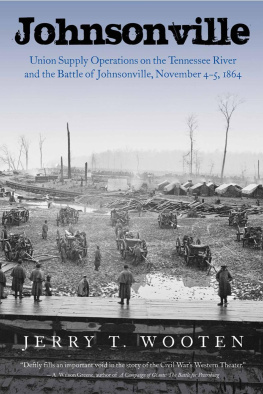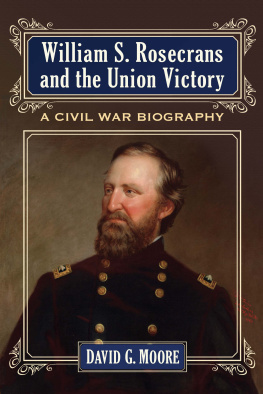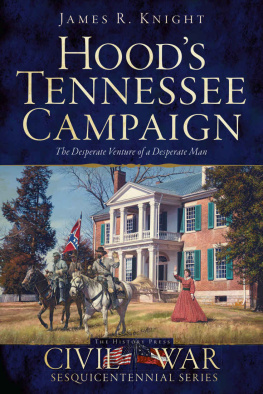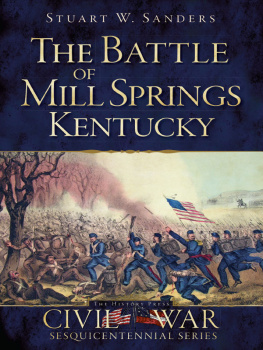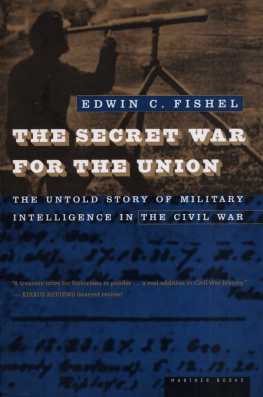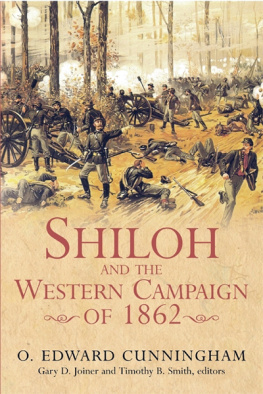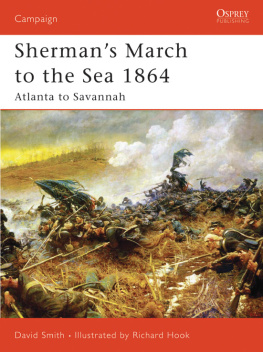JOHNSONVILLE
Union Supply Operations on the Tennessee River and the Battle of Johnsonville, November 45, 1864
Jerry T. Wooten
Savas Beatie
California
2019 Jerry T. Wooten
All rights reserved. No part of this publication may be reproduced, stored in a retrieval system, or transmitted, in any form or by any means, electronic, mechanical, photocopying, recording, or otherwise, without the prior written permission of the publisher.
Library of Congress Control Number: 2019949307
First Edition, First Printing
ISBN-13: 978-1-61121-477-2 (hardcover)
ISBN-13: 978-1-61121-478-9 (ebook)
ISBN: 978-1-61121-478-9 (Kindle)
Savas Beatie
989 Governor Drive, Suite 102
El Dorado Hills, CA 95762
916-941-6896
www.savasbeatie.com
Savas Beatie titles are available at special discounts for bulk purchases in the United States by corporations, institutions, and other organizations. For more details, please contact Savas Beatie, P.O. Box 4527, El Dorado Hills, CA 95762, or you may e-mail us at for additional information.
For Mother and Father
Footprint drawing of Redoubt No. 2 (Upper Redoubt), Johnsonville, Tennessee, 1992.
Courtesy of David J. Meagher
List of Maps
Humphreys County, Tennessee, 1812
Humphreys County, Tennessee, 1832
Confederate Advance, Oct. 16-21, 1864
Confederate Advance, Oct. 24-28, 1864
Confederate Attack on the Transport Mazeppa , Oct. 29, 1864
Confederate Actions at the Tennessee River, Oct. 29-31, 1864
Confederate Advance to Johnsonville, Nov. 1-5, 1864
Battle of Reynoldsburg Island, Nov. 3-4, 1864
Confederate Attack on Johnsonville, Nov. 4, 1864
Photos and illustrations have been distributed throughout the book for the convenience of the reader.
Acknowledgments
I could not have written the story of Johnsonville without the editorial guidance of Dr. Carroll Van West, whose abilities as a wordsmith are unparalleled. I am also indebted to the wonderful staff at the Tennessee State Library and Archives who assisted me with my research, including: Dr. Wayne Moore, Trent Hanner, Darla Brock, Myers Brown, Megan Spainhour, Dr. Tom Kanon, Dr. Kevin Cason, and others too numerous to list. Additionally, many outstanding professionals at the National Archives, Library of Congress, Tennessee State Museum, Duke University, Kansas Historical Society, William L. Clements Library at the University of Michigan, Wisconsin Historical Society, Wisconsin Veterans Museum, Columbus City Library-Ohio, New York City Library, and Middle Tennessee State University, provided invaluable assistance.
Many excellent historians and friends gave generously of their time, advice, and expertise. I owe a tremendous thanks to Dr. Joe Baily, Steven Bartlett, Judith Byrd, Dr. Peter Cash, A. Wilson Greene, Thomas Cartwright, and Dr. Wayne Moore for copy editing and proofreading my work. Additionally, I thank Joseph Brent, David Currey, Reed Dreaden, Ken Ingram, and Don McFall for their historical knowledge and photographic contributions. I am particularly grateful to artist David Meagher for his extraordinary historical knowledge and artistic contributions of battle maps and original drawings.
A huge thank you also to the great folks at my publishing company, Savas Beatie, and especially Theodore P. Savas for taking the time to deeply read and critique my final submission; Sarah Keeney, Lisa Murphy, and Sarah Closson for their marketing skills; and Lee Merideth for shepherding this through production.
Other colleagues and friends who helped me and supported my efforts in writing this book include: Dr. Joey Gray, Dr. Brenden Martin, Dr. Robert Hunt, Al Hethcoat, Meriam Tummons, Fred Prouty, David Fraley, Bud Alley, Dr. Curt Fields, Debbie Shaw, and Dan Pomeroy. I would also like to particularly thank the park staff and Friends of Johnsonville State Historic Park for their continued support and encouragement.
When Warren Atwood appeared one day at Johnsonville State Historic Park, our encounter changed the course of this book. I quickly learned his Civil War ancestor was Cpl. Lorenzo D. Atwood of the 43rd Wisconsin Infantry, and that he was stationed at Johnsonville during the November 4-5, 1864 battle. The young corporal wrote a series of letters to his wife, Cordelia, that provide rich details about the inner workings of the supply depot that exist no where else. I owe an enormous debt of gratitude to Warren C. Atwood II, his sister Robin R. Atwood, and their late father, Leon W. Atwood, for their generous and important contribution of their ancestors letters. I hope they are pleased with the final product.
Finally, I offer my sincerest love and gratitude to my family, William, Frances, and Billy Wooten. My embedded passion for history was channeled through their love and encouragement.
Foreword
T OO often the Civil War in Tennessee is defined in popular memory by its major national battlefield parks, such as those memorializing Shiloh, Chattanooga, Fort Donelson, and Stones River. In the 21st century, historians have been asking different questions and following rarely studied lines of inquiry about Tennessees Civil War experiences.
These more recent roads of inquiry include the study of the long Federal army occupation, the impact of slaves becoming contraband laborers, whether Unionist supporters were to be found across the entire state, and not just East Tennessee, and much more. What links occupation, emancipation, and free black community building? Why have we mostly underplayed or ignoredother than the battles of Fort Donelson and Memphisthe dominance of the Federal navy on the inland rivers? How significant was control of the inland river system dividing East and Middle Tennessee in the development of strategy and tactics in the state?
Johnsonville: Union Supply Operations on the Tennessee River and the Battle of Johnsonville, November 4-5, 1864 , by Dr. Jerry Wooten takes important steps toward answering these significant questions. Of the more than three dozen designated nationally significant battles in Tennessee, Johnsonvilles importance was recognized by only a handful of specialists. Now, with Wootens comprehensive treatment of Johnsonville as a military base,battleground,andlaunchinggroundforemancipation,its transformative story will gain a new and larger audience.
And transformative is the best word to describe the Johnsonville Civil War story. First, the 1864 battle along the Tennessee River at Johnsonville has long needed a comprehensive historical treatment. Past accounts in Tennessee history ranked the battle as a smashing Confederate victory for renowned Confederate Maj. Gen. Nathan Bedford Forrest. More regional and national accounts of the war in the Western Theater merely footnoted the battle or ignored it completely. But as Dr. Wooten makes clear, the battle was a considerable victory by seasoned Confederate troops against a Federal naval baseand the loss of gunboats, transports, and tons of supplies shocked the collective Union army leadership.

